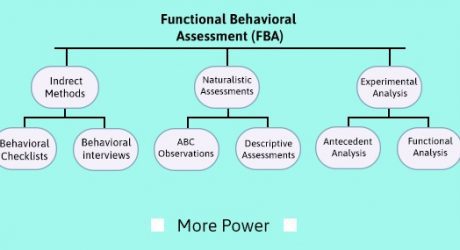Critical thinking is reflective reasoning. It evaluates arguments and information using intellectual skills to make coherent and logical judgments in a particular context. One must measure critical thinking by identifying the connections between ideas and evaluating the arguments presented.
Critical thinking tests measure the ability to think logically and critically and make conclusions based on available information. The working environment observes the application of tests to assess the ability of candidates to use their critical thinking skills. The article is all about defining critical thinking tests measure.
Critical Thinking And Problem Solving: Why One Must Possess The Skills

Before we move directly into the defining critical thinking tests measure, we must first understand why one must possess the skillset. This is indeed one of the great ways to be at the forefront.
There are rapid changes in technology and lifestyle as we face stiff challenges upfront. However, let’s try to understand how critical thinking and problem-solving skills can be of immense help to you.
With the evolutionary changes in technology, you have to learn and then adapt to changes.
However, to improve, you need to bring in new changes and adapt faster to the new environments. Critical thinking tests are, in a way, mock tests that make you flexible and adaptable according to future needs.
The students, with the help of critical thinking skills, can reflect on their learning experiences critically and thereafter make the most effective decisions.
Moreover, with critical thinking, you could take facts from opinionated versions. Also, the skill helps you take all the problems in life as new opportunities for growth and development.
Students, therefore, must sit before the critical thinking test to increase their skills like adaptability and flexibility under critical situations.
Furthermore, the tests make an individual an active participant in the entire process.
While saving the problems in the critical thinking tests, you can learn cooperation, creativity, and cooperation. Also, with the help of the skills, you can practice reasoning to overcome prejudices.
Critical Thinking Tests Structure And Assumptions:

During a critical thinking test, a candidate receives a set of information in a particular scenario with both numerical data and data in writing. The set of information is accompanied by a statement asking the candidate to determine how truthful they think the information is as per the information provided.
The critical thinking assessments include the assumptions, arguments, deductions, inference, and interpretation of results. The assessment measures the effectiveness of the candidate and can use analytical reasoning to work through the information provided.
Critical thinking recognizes the assumptions that find implications in text or writing. An assumption is defined as a claim that can be accepted without enough evidence. The candidates evaluate a given scenario carefully and conclude if there are any relevant assumptions in the statement.
The assumptions are important for critical thinkers because claims have no sufficient evidence, and they may be misleading. As such, one should avoid assumptions in the working world.
Deductions:
A candidate may also get a question where they assess deductions made regarding the information provided. If they are unable to deduce a statement based on the data provided, that deduction may be nullified.
In this case, the candidate must separate the applicable deductions from the others. Their answers find guidance from information provided instead of the conclusions the candidate may reach depending on their knowledge.
The idea is to test the candidate’s ability to evaluate information and decide whether the conclusions are justifiable. The candidate must assess whether the given conclusions follow what the statement presents.
Inferences:
An inference is a conclusion that one arrives at banking on observed facts. The candidate is provided with information in the form of a passage regarding a specific event or scene.
During the critical thinking test, the candidate gets a range of possible inferences. The candidates conclude from supposed or observed facts. They find a short text that they must consider true or otherwise.
They are to say whether those inferences are absolutely false, absolutely true, possibly true, or possibly false. They may also state whether they are unable to reach a conclusion based on the set of information. The candidates can reach valid conclusions and judge the inferences’ validity and relevance.
The choices of candidates find guidance from what they read from the text and also their judgment. For instance, employee turnover can be triggered by poor working conditions. However, this could occur for some other reason- perhaps they have received unwarranted pay cuts.
Interpretations:
An important type of question within the critical thinking tests is where the candidate can interpret the information. As with assumptions, deductions, and inferences, the candidate finds the information in a paragraph with possible conclusions.
The candidate is then asked to interpret the information and decide whether any conclusions are possible based on the information. Interpretations measure the candidate’s ability to understand how to weigh different arguments on a particular issue or question.
The candidate decides if the conclusions match the information beyond a reasonable doubt. The conclusion either follows or fails to follow the set of information.
Argument Evaluation:
Argument evaluation addresses the issue of the strength of an argument.
The authorities provide the candidate with an argument. Thereafter, they have to decide the level of strength or weakness of the argument. The candidate determines whether an argument is weak or strong.
It defines clearly whether it is important and related to the question. An argument is a strong one if it has a direct link to the existing statement.
Measuring critical thinking is an important aspect of critical thinking assessments that evaluate critical thinking skills and mindset. Possessing skills to interpret situations and accurately infer that there is a problem may only be enough. Yes, it is enough if a candidate can analyze the reasons for the occurrence of those problems.
A reliable and valid assessment of a person’s critical thinking skills should challenge the person.
It must demonstrate their ability to use their skills to solve problems. A critical thinking mindset can determine how disposed a candidate is to work towards the achievement of goals.
Argument evaluation determines whether the candidate has the honesty and integrity to define problem situations. Thus, critical thinking tests include a reliable and valid assessment of the critical thinking mindset.
Additional Reading:




























